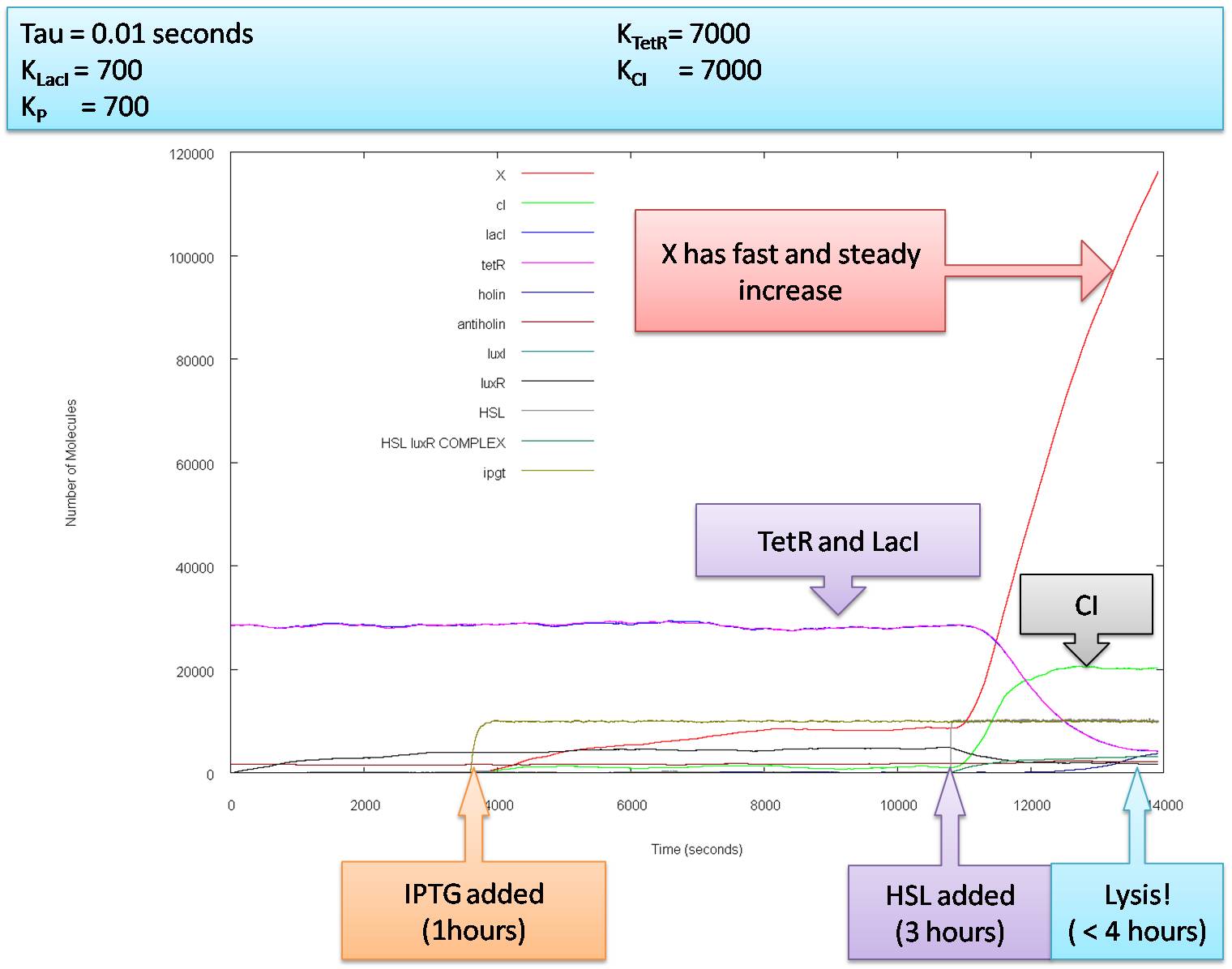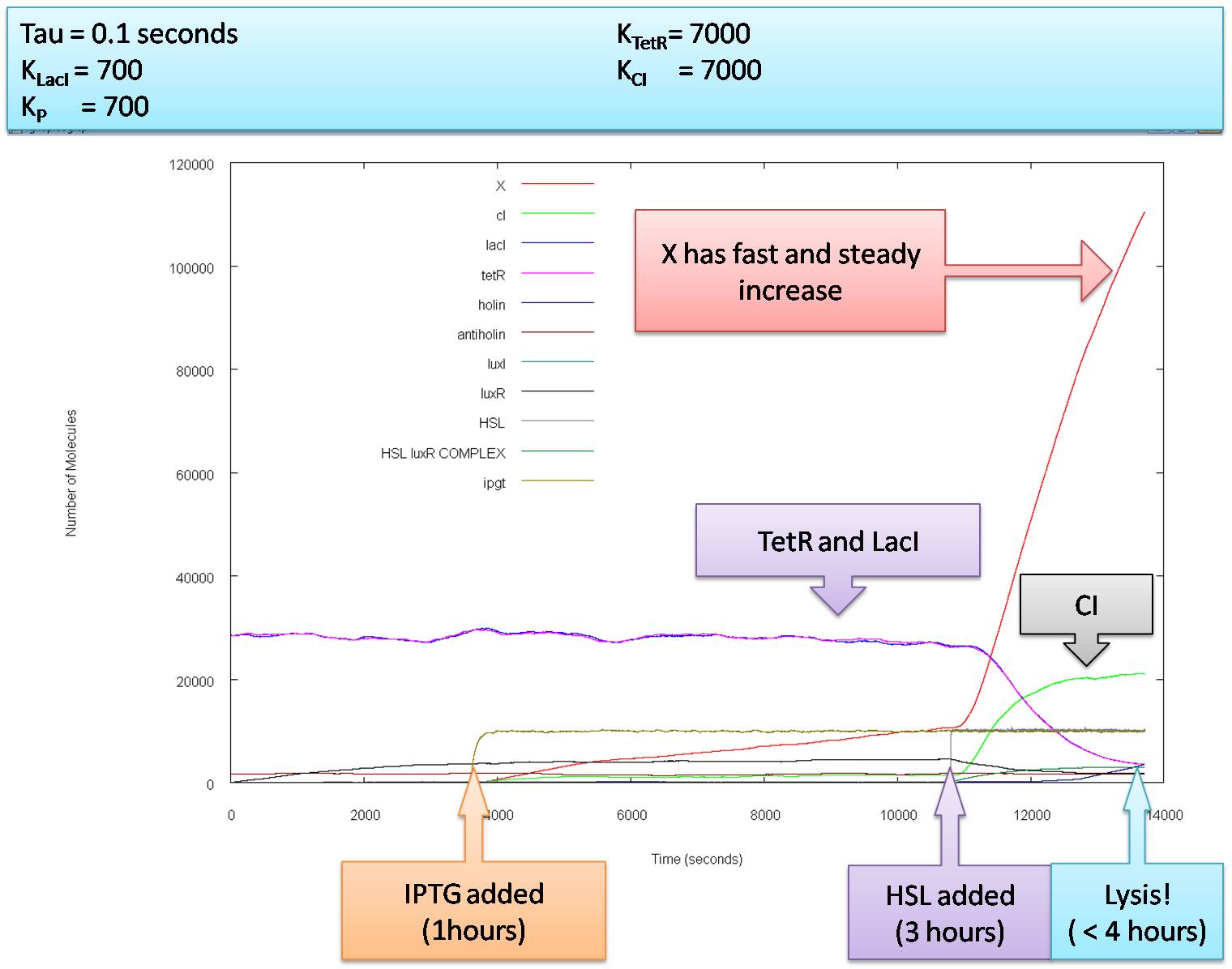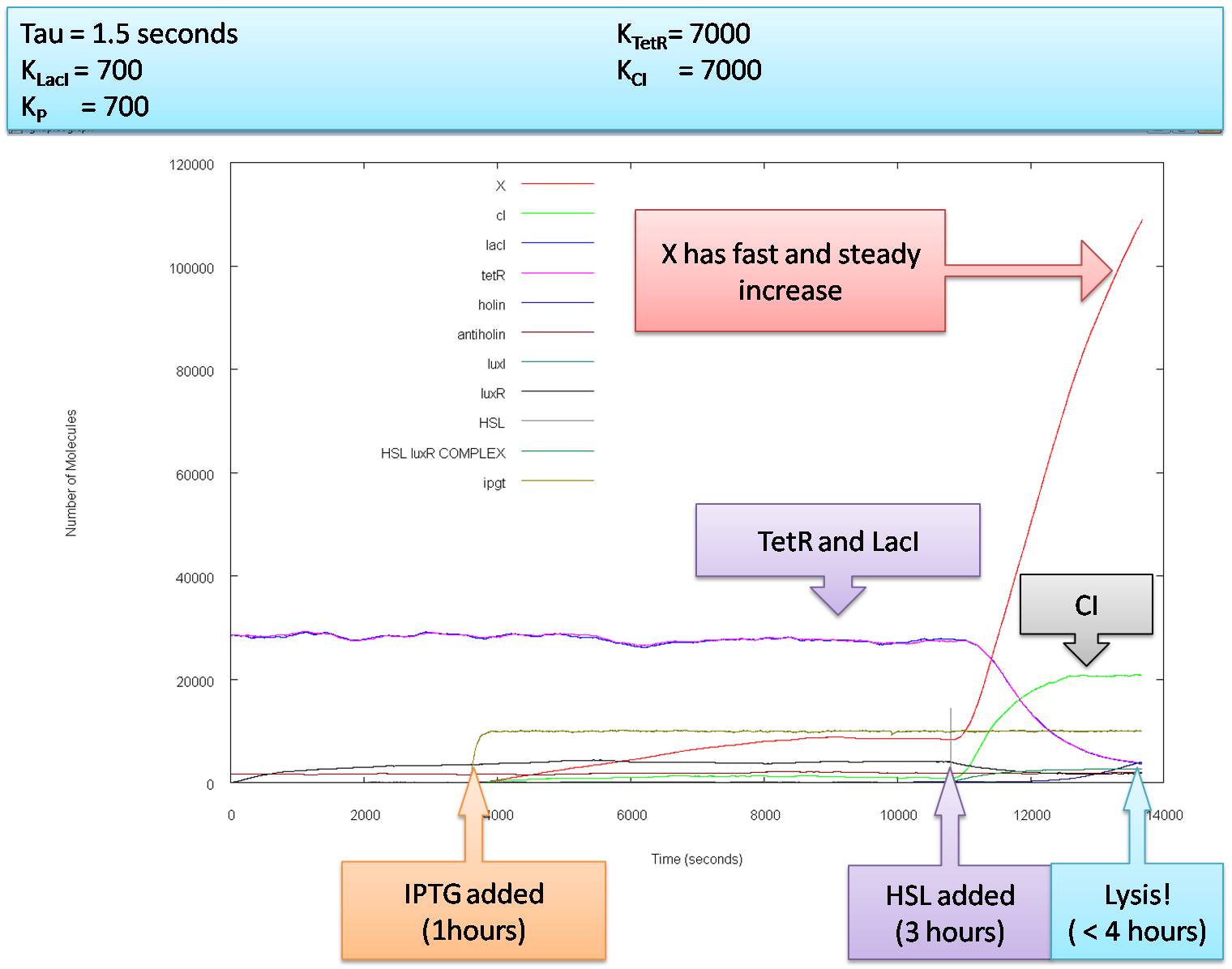Team:Aberdeen Scotland/internal/stochastic
From 2009.igem.org
University of Aberdeen - Pico Plumber
Stochastic Simulations
Due to the low levels of proteins involved when the input signal is activated (lacI repression being lifted and the subsequent lifting of the repression of tetR that induces lysis) we decided to create a stochastic model to create a more realistic simulation of the process. The model we chose was the “tau leap” model is it is quite computationally efficient and easy to integrate when a deterministic model is already in place. The method can be implemented in the following simple steps...
1. Create a Poisson random number generating script ( we did this in C++) that accepts a number λ and outputs an integer distributed with a Poisson distribution around this number.
2. Chose a time, tau, which is large enough that all reactions have a possibility of taking place, but small enough that not too many reactions will take place.
3. Take the deterministic equations, and multiply each term by tau.
4. Take the new value of each term and call it λ.
5. Input this value of λ into the Poisson random number generator
6. Now have now replaced each term in the deterministic equation with an integer distributed around the value of the original term, so we simply add or subtract the integers from the old value of [X_t] to create [X_(t+tau)]
This process can be very fast computationally depending on the choice of tau. We ran several simulations to determine the dependence of tau on how the model worked and found that the choice was fairly arbitary when taken between ~0.01 seconds and ~1.5 seconds. However, the larger tau is, the quicker the simulation runs. We see the comparison between tau = 0.01 seconds, tau = 0.1 seconds and tau =1.5 seconds below.
So the three simulations with different tau timesteps all work almost identically. We note however that increasing tau above 2 seconds can lead to some very strange behaviour which we will not show here.
Stochastic VS deterministic
 "
"


